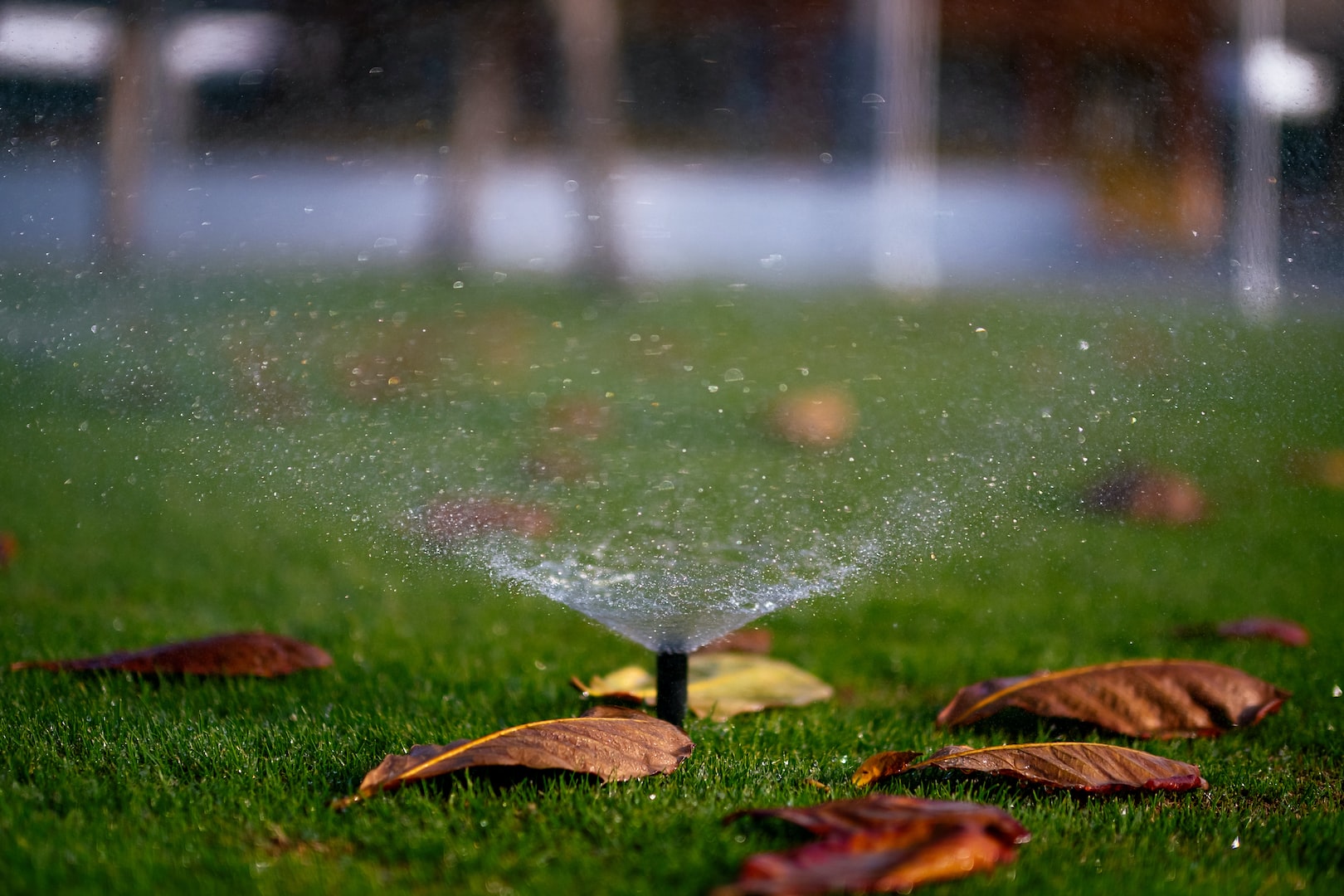
READ TO SUCCEED!
After the lawn has been sprayed, begin to water one or two days after initial spray date to ensure the mulch as gone hard enough before any water comes in contact with it. Always avoid pooling and washing out of the seeds and/or mulch. More or less water may be required depending on weather conditions but always apply sufficient water to keep the soil and mulch moist. (Refer to watering your lawn below for more in-depth information)
Mow your grass as soon as you detect a substantial amount of short young new grass. Discontinue watering one or two days prior to mowing to allow the soil surface to become dry, after your first mowing fertilize your lawn(optional).( Refer to mowing your lawn below for more in-depth information).
After mowing and fertilizing resume to watering once a day for the next five to seven days. Then mow your grass again. Once you have done this you may began to water less frequently but always be sure to fertilize and water sufficiently when the color of the grass begins to loose its deep green color. As the lawn matures soak periodically rather than frequent light or daily waterings, once the lawn has fully matured your grass may go weeks without any water needed depending mainly on how hot and dry the weather is.
If you follow these steps we ensure you that you will have a nice healthy green yard, if you have any questions or concerns about what you just read or about what to do with your new lawn please read the below areas that offer a more in depth analysis on what to do.
If you would like to contact us we would be more then happy to offer our opinions to you and as well to set up a few dates that we could stop by and check up on the lawns progress to maybe offer a few suggestions on what to do to make sure the yard will come out with its full potential. WE HOPE TO HEAR FROM YOU!
WATERING YOUR LAWN
So here you are, you have your grass coming along but your not to sure on how much or when you should water it well were here to help you on that.
Your hydro-mulching application contains grass seed that requires a continuous supply of moisture, this moisture will ether come from a rainfall or a watering of some sort. It is not likely that it will continue to rain for the next week or two every day so be sure to water enough to keep the moisture in the soil.
During the stage in which the grass is beginning to grow watering two or three times a day is usually appropriate however some weather conditions may require you to water less or more. On very hot dry summer days three or more waterings a day may be required to keep the ground moist but be sure to AVOID POOLING AND WASHING OUT OF THE SEEDS AND MULCH.
Always try in keep a sufficient amount of moisture in the soil and on top of the mulch so that the seeds have the chance to take as much water as they need. If you are using an irrigation system be sure to set them to appropriate timing but make sure that none of the sprinklers are pooling to much water or washing anything out. Usually a good 10 to 20 minutes twice or three times a day during the early morning, afternoon and/or early evening works well.
The second phase of the watering comes along when your grass has began to germinate and is about 1 inch tall. You can now reduce the watering to two or three times a week, unless however it is very hot and dry in which case three or more times a week is required. And also always reduce or stop watering if wet and/or cool periods come along in the months, to much water can be just as harmful as to little. If however you can not water as much as is required try and do your best to keep the ground moist, your grass will grow without a continuous watering but it will slow down the process of germination.
MOWING YOUR LAWN
Congratulations on your new lawn its all nice and green but your not to sure if you should cut it or not, well we are here to tell you when the time is right so you don't damage your new lawn.
Your lawn should be mowed as soon as the grass blades are about 2 inches to 3 inches, when mowing your grass set your lawn mower so that its not cutting your new grass to short but just so that the grass does not have the chance to grow and stay to tall . By delaying on your first cut and leaving the grass grow longer will encourage weed growth and also allows long grass to flop over and appear shabby.
Mowing may not seem like a big deal but it is just as important as your fertilizing it offers a vital role in controlling your weeds and giving the grass the opportunity to "choke out the weeds" so they wont grow in giving you the nice flawless weedless lawn you always wanted. Mowing should be done regularly after initial mowing has began and always try to make sure the blades on the lawnmower are sharp mainly because unsharpened blades with cause torn and bruised grass resulting in grass disease and unsightly brown spots that you do not want on your new lawn.
If the grass happens to get to tall before initial mowing raise the mower and cut the grass, mowing young tall grass too close can kill the grass because it has not had the chance to establish its self completely yet. A good rule to remember:
**NEVER MOW OFF MORE THEN ONE-THIRD OF THE GRASS LEAVES DURING ANY ONE CUTTING**
FERTILIZING YOUR LAWN
When the hydroseed is applied there is a starter fertilizer in it to help establish the grass faster and stronger this mixture is a 10-25-10.
Fertilizing is not needed to establish your newly hydroseeded lawn, it is however recommended by us if you would like to add an additional boost to your new lawn (greener and thicker). Here is some information we would like to pass along to you, you will want to fertilize your lawn after the first mowing of it and once again 30 days after that. You will want to apply your fertilizer on your lawn when it is nice and dry followed by watering it thoroughly.
Use a standard fertilizer found at most lawn supply store for example 10-10-10, 13-13-13, 10-20-10, 12-12-12, 14-14-14, 12-24-12. Apply them at the rates recommended on the bags. If there are no recommendations on the bag it usually works out to be 50 pounds on a 5000 square foot average lawn. Now if your wondering what all those numbers mean then here is an easy way of remembering it, any package of fertilizer will have three numbers which stand for (N) Nitrogen, (P) Phosphorus, and (K) Potassium. These are the three main ingredients that plants need, and they are always listed in that order:
NITROGEN (N) promotes green growth. Leafy plants such as grass need plenty of nitrogen to have nice color and rapid growth. The higher the nitrogen number, the more nitrogen that will be in the fertilizer. This is an important part of fertilizers used on an established lawn.
PHOSPHORUS (P) is very beneficial to promoting a healthy root system. Fertilizers that are designed to be used when seeding grass are usually high in phosphorus. High phosphorus fertilizers are also used with perennials, bulbs, newly planted trees and shrubs and for flowers. The most common type of fertilizers that are high in phosphorus are STARTER and FALL fertilizers.
POTASSIUM (K) will improve the overall health of plants. It will also aid plants in withstanding cold and hot temperatures.
Other chemicals in a fertilizer may include Magnesium which will aid in seed formation and helps plants have a dark green color. Calcium to help promote rooting, Sulfur for vigor and Iron for a dark green color.
When your looking for your fertilizer and not sure what to buy just remember what the numbers mean and match it to what you want out of your grass whether it be a thicker greener lawn (a higher first number) or whether your concerned about the grass being torn up and want to help protect that by establishing the roots better (a higher second number).
When you're buying fertilizer a 10-20-10 mix of 100 pound bag is like saying this: it has 25 pounds of nitrogen, 50 pounds of phosphate and 25 pounds of potash. When buying your fertilizer do not buy a bag with any one number much higher then the others before asking someone about the product and what it may do to your lawn. When applying the bag make sure you do not over do it or apply the bag at the wrong time in the season cause this may lead to delayed flowering, grass and root burn or even dead grass due to excess fertilizing. Make sure you read the labels and follow the product recommendations for your fertilizer
ALWAYS BE SURE TO WATER THOROUGHLY IMMEDIATELY AFTER APPLYING THE FERTILIZER AND NEVER EVER USE WEED KILLER ON YOUR NEW LAWN.
